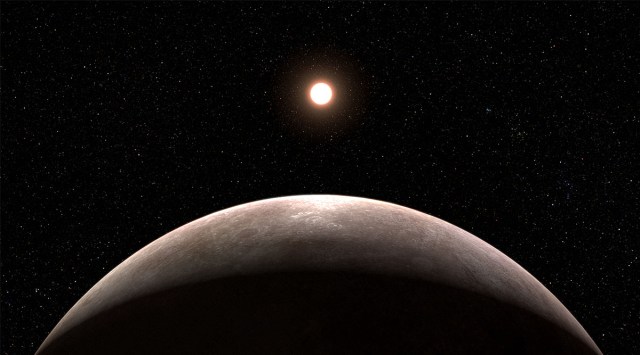Webb telescope confirms its first exoplanet: Earth-sized rocky planet orbiting red dwarf
For the first time ever, the James Webb Space Telescope has helped scientists confirm the existence of an exoplanet—an Earth-sized rocky planet that whizzes around a red dwarf star in an orbit that lasts just two days.
 Artist's impression of the newly-discovered red dwarf planet and the star it orbits. (Image credit: NASA)
Artist's impression of the newly-discovered red dwarf planet and the star it orbits. (Image credit: NASA) For the first time ever, researchers have confirmed the existence of a planet that orbits another star using the James Webb Space Telescope. According to NASA, the planet has been formally classified as LHS 475 b and is almost exactly the same size as our own planet.
LHS 475 b’s diameter is about 99 per cent that of the Earth. With Webb’s precise light curve, the researchers were able to confirm that the planet completes an orbit around its star in just two days. But even though the planet is closer to its star than any planet in our solar system, it is orbiting a red dwarf star that is less than half the temperature of the Sun.
After carefully reviewing targets of interest from NASA’s Transiting Exoplanet Survey Satellite, the research team chose to observe the target location with the Webb telescope. The space observatory’s (NIRCam) (Near-Infrared Spectrograph) was able to capture the planet easily in just two transit observations.
“These first observational results from an Earth-size, rocky planet open the door to many future possibilities for studying rocky planet atmospheres with Webb. Webb is bringing us closer and closer to a new understanding of Earth-like worlds outside our solar system, and the mission is only just getting started,” said Mark Clampin, who is a member of the research team, in a press statement. The results of the study were presented at a press conference of the American Astronomical Society (AAS) on Wednesday.
According to NASA, Webb is the only telescope that is capable of characterising the atmospheres of Earth-sized planets orbiting distant stars. Webb is sensitive enough to detect a range of molecules in LHS 475 b’s atmosphere, but the researchers are yet to make definitive conclusions. In fact, it is even possible that the planet has no atmosphere.
Although they can’t yet say what is present in the planet’s atmosphere, they can confirm what is not present. For example, they know the planet does not have a thick methane-dominated atmosphere, which is what can be found on Saturn’s Moon Titan.
But one of the most interesting aspects of the research is the fact that it opens up the possibility of pinpointing more Earth-sized terrestrial planets. This ability could potentially prove instrumental in the search for other planets with the capability to harbour life.







